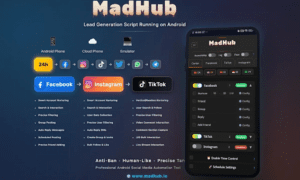$61,110: The average cost of replacing a single staff RN
83: The average number of days required to recruit an experienced RN
$289,000: The average amount a hospital can save in a year with each percent change in RN turnover
Nurse staffing is one of the most significant challenges healthcare administrators face.
Although the nurse staffing shortage is not new, the need to find creative and flexible recruiting and retention methods is becoming increasingly important for healthcare facilities.
Why do healthcare facilities’ recruiting methods have to change? Simply put, the rules of the game have changed.
Technological advancements have grown exponentially in recent years, increasing work/staffing options for both facilities and clinicians. Furthermore, individuals are increasingly searching for meaning and flexibility in their jobs as well as greater work-life balance.
Healthcare administrators who fail to acknowledge these changes risk being impacted more severely by prevalent staffing challenges.
Staffing challenges in the healthcare industry
Anyone who works in healthcare knows that staffing challenges are widespread, significant, and complex. Let’s take a look at the main challenges.
Staffing shortages
Simply put, there are not enough nurses to meet the demand for nursing care. Furthermore, although many efforts are underway to increase the number of nurses, the shortage is expected to continue for the foreseeable future.
Why?
- The US population is aging and therefore requires more complex healthcare services in greater numbers.
- The nursing workforce is also aging, and a large percentage is reaching retirement age.
- Many nurses are leaving the profession due to burnout, further exacerbating the nursing shortage.
Nurse burnout
As mentioned, a significant number of nurses experience burnout. Nurse burnout is complex because it stems from staffing shortages and further impacts these shortages.
When facilities are understaffed, nurses are overworked, leading to stress and burnout. Stress for nurses stems from multiple interrelated sources:
- Feeling overworked and unable to take breaks and/or complete all tasks within the shift
- Feeling that the care they provide is suboptimal
- Being scheduled for overtime
- Having requests for paid time off (PTO) denied
High turnover rates
High turnover rates are another cog in the wheel of interconnected staffing challenges.
When facilities are understaffed and nurses are burned out, turnover rates increase. High turnover rates exacerbate facility understaffing, leading to greater burnout in remaining staff.
Elevated staffing costs
In 2023, Nursa commissioned an independent research survey of 203 hospital executives examining how healthcare facility decision makers perceive nurse staffing trends.
The survey found that 75 percent of chief financial officers (CFOs) and 69 percent of all surveyed executives considered that nursing costs put “significant pressure” on their bottom line or were the top driver of margin pressures in the previous two to three years.
Staffing shortages and elevated turnover rates increase costs since healthcare facilities end up paying overtime rates to remaining staff, steep agency fees, and other expenses related to recruiting and onboarding new staff.
Creative methods to attract and retain nursing talent
In light of the current staffing challenges facilities face, healthcare administrators must think outside the box.
- How can healthcare facilities boost talent acquisition efforts?
- How can facilities keep staff members happy to improve healthcare staff retention?
- How can the elevated cost and time associated with recruitment be reduced?
The following healthcare recruitment and retention strategies provide facilities with outside-the-box short- and long-term staffing solutions.
1. Lean into nursing preferences for flexibility
Choosing their own schedules is one of the aspects of flexibility that nurses most value.
According to a 2023 study titled “The Power of Self-Scheduling: Frontline Nurses’ Insights and Perspectives to Achieve Staffing Flexibility,” 64 percent of nurses ranked self-scheduling first, and 23.8 percent ranked it second out of numerous options, including part-time work with hour requirements, hybrid shift lengths, and hybrid roles.
The study concluded that self-scheduling is an effective staffing method that benefits clinicians and facilities.
- For nurses, self-scheduling can facilitate a better work-life balance.
- For healthcare facilities, self-scheduling can decrease absenteeism and improve nurse retention, team collaboration, and professionalism.
In addition to offering self-scheduling, healthcare administrators should consider a variety of options that can provide greater flexibility to staff:
- Block scheduling
- Job-sharing roles
- Remote opportunities
- Float pool opportunities
- Weekend- or evening-only roles
2. Differentiate your facility with unique perks
Healthcare facilities must offer nurses adequate compensation. However, salary increases alone are not enough to attract and retain nurses.
The 2023 study commissioned by Nursa found that 77 percent of surveyed CFOs had increased nurses’ starting wages by 20 percent or more in the previous two years. However, 86 percent of hospitals and health systems still saw at least 10 percent of their nursing staff quit in 2023, and over 50 percent lost at least 20 percent that same year.
In addition to flexible scheduling and adequate compensation, nurses want support, community, and an inclusive culture.
Show you understand nurses’ needs and want to support their wellbeing and personal and professional growth by offering unique perks:
- Child-care reimbursements
- Housing stipends
- Transportation perks
- Student loan matching
- Mental health support
Employee referral programs are also great methods for healthcare facilities to invest in internal staff while recruiting new talent.
3. Partner with local nursing programs
Hiring seasoned nurses offers facilities the advantage of greater knowledge and experience. However, recruiting new grads provides different benefits.
- New grads are in a learning mindset and typically adapt more easily to a facility’s policies, protocols, and work culture.
- Newly graduated nurses have learned the latest evidence-based practices and are typically more confident and better versed in technological advancements than experienced nurses.
- Entry-level salaries are significantly lower than those of experienced nurses.
One way to attract new nurses to your healthcare facility is by partnering with local nursing programs. Consider offering students facility tours and shadowing opportunities. Furthermore, partnering with nursing schools to provide mentorship programs is a great way to access new nursing talent directly.
Hiring new grads is a long-term investment. Initially, new nurses will need training, mentorship, and other types of support. However, with appropriate retention strategies, these new grads can become a facility’s experienced and loyal nursing staff.
4. Scout clinicians from online platforms with trial shifts
Workforce planning is complex in healthcare. Patient census can fluctuate unexpectedly. Staff members can call out, leaving facilities understaffed. Additionally, turnover is so high in healthcare that facilities are frequently in need of new staff.
When nurses quit, facilities must find ways to fill scheduling gaps until a permanent replacement is found.
Sourcing PRN clinicians through online staffing platforms is an efficient and cost-effective way to fill short-, medium-, and long-term schedule gaps.
For instance, Nursa, a healthcare staffing platform, allows facilities to post open shifts without long-term contracts or minimum quotas. Not only can facilities cover open shifts, but they can also “try out” vetted clinicians from a deep local talent pool. Facilities can then offer these PRN clinicians full-time positions without having to pay steep hire-away fees.
An online staffing marketplace is a perfect example of how thinking outside the box can reap both short- and long-term benefits.
5. Adopt a data-driven approach
Don’t make assumptions. Let the data help you discover the best recruitment approach. Analyze which recruitment efforts pay off in the long term and lean into these efforts more heavily.
The following actions can help facilities glean important data-driven insights:
- Monitor 90-day retention by hiring sources.
- Track the time-to-fill by source.
- Conduct short surveys with new hires to understand their experience and provide support.
- Experiment and iterate.
Traditional recruiting will get you traditional results
If you have the resources to invest $61,110 and wait 83 days to fill a single RN vacancy, conventional recruiting methods may be just fine for your healthcare facility.
However, if you want to fill gaps fast without paying expensive hire-away fees, then you must be willing to try different recruitment strategies.
- Strive to offer your staff what they need, including flexibility.
- Leverage technology.
- Rely on adaptable staffing solutions.
- Take steps now that can provide long-term gains.
Finally, let the data guide you toward the best practices in healthcare hiring. Analyze which strategies work and which provide the greatest benefits for the lowest investment.
Don’t let preconceived notions limit your options. Allow yourself to think outside the box, and don’t dismiss a recruitment strategy before testing it out.





























